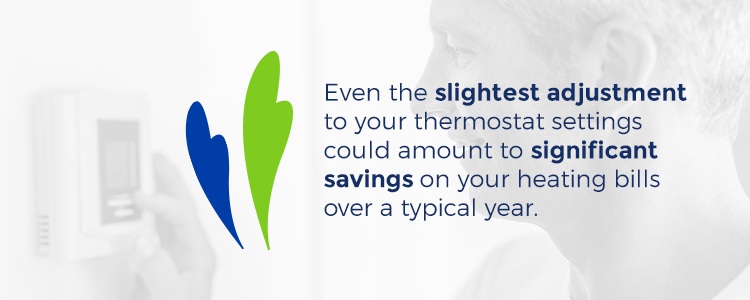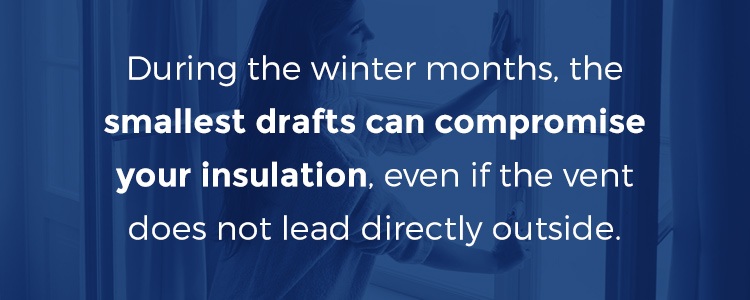
Home heating costs are among the most significant cumulative expenses that homeowners incur over a year. For residents who rely on oil-based heating systems, there are various ways to lower your heating costs. Some of the simplest aspects of home maintenance can give you a lower heating bill. Depending on the condition of your oil tank, you might need to perform some system maintenance to reduce heating bill hikes. This article covers 20 different ways to reduce heating costs.
1. Tune Up Your Heating System
As an oil heater lags due to years of constant use, it will inevitably burn up increased amounts of fuel to perform its normal functions. This can put a major strain on your oil supply because the heater will require more energy as it struggles to process and disperse heat through your living quarters. A tell-tale sign of this problem is when your heating bills steadily increase monthly or yearly, despite there being no change in your overall usage habits or the outside temperatures in your community.
To keep your oil heater running clean and smooth for the foreseeable future, check its performance annually and tune it up as needed. Check the connections to the ducts to make sure that everything flows properly from the heating unit. If the oil is sludgy or the inside of the tank is dirty, use a tank cleaning fluid to clear out the system and flush it of impurities.
2. Open Your Blinds
On sunny days, keep your blinds and drapes open to let in as much sun as possible. Likewise, keep your blinds and shades closed at night to inhibit potential heat loss. While the difference might be minor, any improvement can contribute to your overall savings when added up over time.
3. Turn Down Your Thermostat
Everyone loves the warmth of artificial heat during the winter months, but most people could easily be just as comfortable with slightly lower temperature settings. Fact is, even the slightest adjustment to your thermostat settings could amount to significant savings on your heating bills over a typical year. If you bring the temperature down just two degrees, you might not even notice the difference, but your annual heating costs could ultimately be much lower than those of the prior year.

In many homes, heat is used effusively on cold days. As a result, heating costs will often spiral out of hand, even though much of this heat is merely taken for granted. Chances are, the rooms in your house could easily be kept warm with basic maintenance to your insulation system, even if you lower the settings on your thermostat.
4. Insulate Your Heating System Pipes
In much the same way that air compressors often leak significant amounts of the air that they pressurize, your heating system could leak heat before the supply makes it to your living quarters. The most vulnerable part of the system for this activity is the pipes, where heated air could leak along any link.
The path from your heating unit to the vents in your living areas must be tight and free of leaks, otherwise significant amounts of heat could be lost along the way. To prevent heat from escaping from your heating pipes, you need to have insulation, without which drafts could form along the metal. The problem is likelier to develop if the system pipes have loose joints. Wrap insulation around these pipes to prevent leakage.
5. Seal Gaps Between Your Doors and Frames
The space between the edges of your doors and the surrounding wall frames could be a source of wind drafts. This problem can get worse over time as the wood endures year after year of heating and cooling cycles. Though the gaps may be thin and narrow, they can be a huge drain on your insulation. To prevent this problem, apply weather stripping tape along the door frames. This should close any gaps that may be present when you shut your door.

Apply the tape along the side and top edges of your door frame to provide a sufficient all-around draft seal. For even more protection against drafts, install an under-door draft stopper to the bottom of your door. This could be especially useful if you have noticed a slight gap underneath your door. Once you complete these enhancements, you might even find that you no longer need as much heat as you had in the past.
6. Caulk the Edges of Frames and Panes
Small cracks can form over time along the edges of window panes and frames. To prevent warmth from slipping out and coldness from seeping in, reinforce the edges of the window panes and frames with caulk. It is relatively easy to apply caulk along the frames. You can find the supplies at your local hardware store. The directions are easy to follow. You simply hold the tip along the edges of the areas in question and apply.
If you are unsure whether your windows are leaking air, perform the lighter test. Take a lighter and move it up the edges and across the tops and bottoms of your windows. If the flame blows inward at any point, you have located a draft. You can also perform this test with a candle. Perform the test on each window, as some might have drafts while others might be perfectly sealed.
7. Close Unused Vents
All vents within your home should be closed when not in use. This includes cooling vents, air vents and kitchen vents. During the winter months, the smallest drafts can compromise your insulation, even if the vent does not lead directly outside. A vent that leads to one of the cold, dark areas of your house could render the air colder in your living room and bedrooms.

If you have a fireplace, keep the chimney plugged at all times when you are not burning logs. Fireplace draft stoppers are easy to install, as they open up like umbrellas and serve as inflatable rubber barriers between the chimney and your living room.
8. Move Furniture to Unblock Radiators
In many cases, homeowners simply place furnishings wherever the items fit with no regard for the locations of radiators. Make sure that none of your furnishings are situated in spots that might impede the flow of your radiators, which need to be in full circulation to keep your interiors warm. A large sofa, for example, could easily degrade the flow of heat into your living room if the back of the couch is placed within inches of the radiator of your main living area.
If you have considered changing your furniture arrangements, now would be the time to do so, keeping in mind the placement of your radiators. If you have too many pieces of furniture in your living room to clear, try to scale back some of the less essential items. If there is a chair or shelf that you no longer use, consider relocating or donating the item.
9. Replace Your Old Heating System
If your heating system is more than 20 years old, it is time to get a new one. Even though a well-maintained heating system can last for up to 20 years, nothing lasts forever. Wear and tear inevitably will make things run slower and less efficiently. If problems with your heater have become increasingly common and the repair costs are starting to exceed your monthly heating costs, chances are the time has come for a new system.

In due time, the money that you might invest in a new system could easily be earned back through savings on your subsequent heating costs. Today’s newer heating systems are also more efficient due to improvements in technology. With periodic maintenance, the newer system could easily outlast your current one. You might never need to buy another system again for as long as you own the property.
10. Install a Programmable Thermostat
One of the easiest ways to passively save on your heating bills is with a programmable or smart thermostat, which will automatically adjust your heating levels according to the ambient temperatures within your living quarters. All that you would need to do is install the thermostat and change the presets according to your liking. Beyond that, you would merely need to inspect the thermostat each year to make sure that the contacts are clean and the setting calibrations are accurate.
Over time, dirt can develop on the mechanical contacts that allow the thermostat to communicate with the heating tank. If you find this to be the case during one of your annual inspections, simply wipe the contacts clean with a Q-tip.
From time to time, you might need to recalibrate the settings on your thermostat. To see whether this is the case, place a thermometer with verified accuracy next to the thermostat and wait 15 minutes. If you find a variance of more than 3°F from the intended setting, you will need to recalibrate the thermostat.
11. Inspect and Reinforce Your Insulation
To guarantee warmth throughout your living quarters, your walls must be well insulated. Make sure that the insulation within your wall cavities is thick, intact and free of rot. Also, check the insulation in your attic and basement or crawlspace.
Attic insulation can wear over time due to rot caused by water exposure, which occurs as leaks start to form within the roof. Insulation can also come under attack from rodents and termites, the presence of which could also indicate roofing issues that would definitely be a threat to the warmth and heating efficiency of your home. Similar problems can affect your crawlspace if bugs, water or critters make their way inside. In short, the condition of your dark spaces goes hand-in-hand with the efficiency of your heating system.
12. Install Storm Windows
If the windows in your living quarters are old and inefficient, replace them with modern-day storm windows, which are better-equipped to trap air and insulate your interior. Newer windows often have double panes infused with gases that provide greater insulation and protection from ultraviolet rays.

The benefits of newer windows — which could easily outlast the remainder of your occupancy at your current address — also extend to the summer months when you need to trap the coolness provided by your air conditioning system.
13. Use Heating Oil Additives
To enhance the performance of your heating oil, consider the use of additives that could make the fuel more clean-burning. With an energizing additive, you could improve the combustion efficiency of your oil tank and lower the amount of waste that lingers in the system. An additive could also clear away sludge within the tank and inhibit the development of rust along the interior walls.
14. Install a Solar Water Heater
As increasing numbers of homeowners seek green-friendly options, solar energy has become a popular alternative in multiple areas. To free up your heating system, consider using solar heat for your water. This way, you would no longer have to burn up extra heating oil just to run a warm bath or shower. On days when the skies are clear, summer and winter, you could easily have your warm-water needs met free of charge, all thanks to the natural rays of the sun.
15. Buy Oil During off Seasons
One of the easiest ways to spend less on essentials like heating oil is to stock up during off seasons when demand is low among the general public. Approximately 5.7 million American homes use heating oil. The majority of homeowners within that figure tend to refill their tanks during the weeks and months when they most need it, such as during the late fall and winter. Like most commodities in high demand, oil prices tend to spike when demands are at their peak.

To avoid paying high prices for heating oil, fill up your tank each year slightly ahead of the late-fall onslaught. A good time to purchase heating oil is in the late weeks of summer, when few people even have winter on their minds. Due to the relatively low demand for heating oil during summer months, you could easily find some good deals and ultimately save money. This will also keep your tank full, which is good for the health of the tank and oil supply.
16. Avoid Cap Plans
To avoid paying more on your heating bills over the long run, avoid special deals that offer sweet yet short-term benefits. One of the most misleading deals on the oil market today is the capped plan, where you pay a small per-gallon fee in exchange for a locked per-gallon price on oil, regardless of spikes in the market. A typical capped plan is advertised as follows:
- Oil is currently at a relatively low price, such as $2.00 per gallon.
- The price on oil might spike in the upcoming year, exceeding $3.00 per gallon.
- For a fee of 25 cents per gallon, your price on oil will be locked at $2.00, regardless of market hikes.
Under this contract, you would likely pay more than most of your fellow residents who avoid capped plans because hikes in oil prices rarely exceed 30 percent. Furthermore, hikes in oil prices are less common than advertisers might lead you to believe in their promotions of capped plans.

17. Avoid Extra Charges
Make sure that the price quoted on each oil delivery is the final price and not merely a subtotal. Some companies will quote sales prices without mentioning various add-on charges. Consequently, you might place an order expecting to save money, only to see that savings evaporate once the hidden fees come to light. Charges to beware of include the following:
- Delivery fees: Some oil companies will tack on an additional charge for the outbound delivery to your place of residence. While this is perfectly understandable, this extra charge should be added to the price advertised in the original quote.
- Fuel surcharges: With some deliveries, the final price will include extra fees that are added on for no apparent reason. Before you agree to a fuel order, ask the sales representative about any such charges on the final bill.
- Afterhours and weekend charges — some fuel delivery companies offer their services 24/7, 365 days each year. However, these companies will usually charge extra for deliveries on off hours and during weekends or holidays. To avoid these charges, try to keep stocked during regular delivery days and hours.
Rule of thumb — if the final price you are asked to pay is not the same as the price you were quoted for the services in question, and no extra services were performed at the time of service, you have been misled.
18. Dress Warmer
To paraphrase Jimmy Carter, you could save on your heating bills and also leave less of a carbon footprint by simply turning down your heater and donning a sweater during winter months. On some of the coldest days, you might need two sweaters and an overcoat, but you could easily get used to those layers in the winter time, even on days when you stay indoors.
19. Regular Maintenance
As long as your heating system is within its natural lifespan, you could extend its life expectancy with periodic maintenance. In the weeks leading up to the each year’s cold seasons, inspect the key components of your oil heater for signs of dirt, gunk or wear. The parts to check include the heater, smoke pipe, chimney base, nozzles, filter and pump strainer. Clear away dust and greasy residue and change out the filter if it appears encrusted or worn. If you discover what appear to be more serious problems, contact Smart Touch Energy to schedule an oil burner cleaning.

20. Keep a Full Tank
To keep your oil tank healthy and free-flowing, it is essential to always have a full or near-full supply of oil. This way, you will never run low at a crucial juncture, such as during a subzero streak when the roads in your area are impossible to navigate due to snow and ice buildup. Even if an oil delivery truck could reach you in such a situation, it might take hours and involve extra costs, especially if your tank needs to be restarted.
A full supply of oil will also protect the metal within your tank and prevent sludge formation. When the tank is nearly empty, the remaining supply can thicken and clog your system. With the inner-lining of your tank exposed, the upper-inches within the tank could attract moisture, which could have various detrimental effects. The moisture could send impurities into the oil and cause rust along the inner walls of the metal, leading to costly repairs and possible tank failure.

Buy Oil From Smart Touch Energy
The colder months of the year bring home heating costs to the forefront. If you can achieve a lower heating cost monthly, you could save significant amounts of money that you could put toward other expenses. Of all the things that you can do for your heating system, the two most important are to keep the oil burner properly maintained and full of clean oil. Explore our products and services here at Smart Touch Energy for more information.




